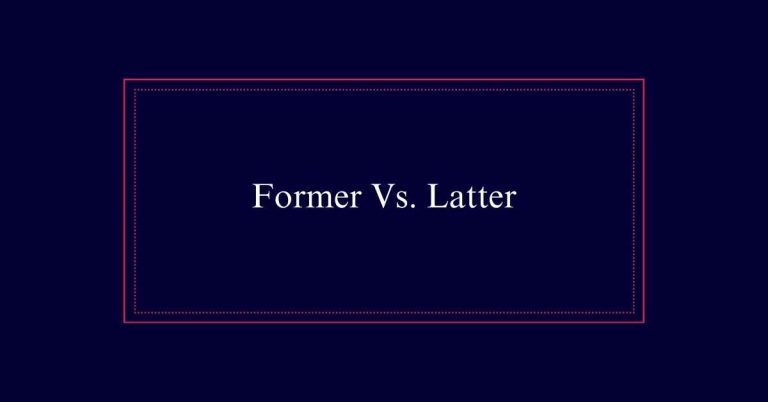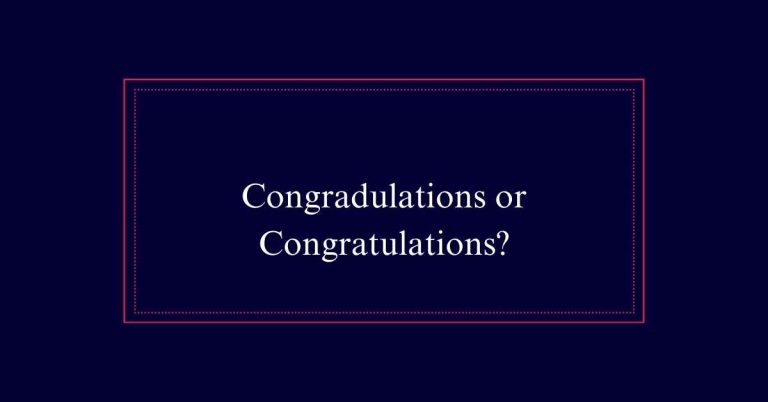Difference Between Some and Any
‘Some’ and ‘any’ are used differently in sentences. ‘Some’ is typically used in positive sentences, offers, requests, and questions where a positive answer is expected. For example, ‘I have some time’ or ‘Would you like some coffee?’ ‘Any’ is used in negative sentences and questions to indicate an unknown or unlimited quantity, such as ‘I don’t have any money’ or ‘Is there any milk left?’
‘Some’ suggests a specific quantity, while ‘any’ is non-specific.
Definitions of ‘Some’ and ‘Any’
‘Some’ and ‘any’ are both determiners used to describe quantities, but they differ in their specificity and context.
‘Some’ is often used to indicate a specific type or known quantity. For example, ‘I bought some apples’ suggests a certain number of apples.
In contrast, ‘any’ refers to an indefinite, unspecified quantity. For instance, ‘Do you have any apples?’ doesn’t specify how many or what kind.
‘Some’ can also appear in questions when making offers or requests, such as ‘Would you like some help?’
On the other hand, ‘any’ is typically found in negative sentences or questions indicating uncertainty, like ‘I don’t have any apples.’
Specificity With ‘Some’
Understanding the specific usage of ‘some’ helps in conveying a precise and known quantity or type in communication. ‘Some’ is used when referring to a specific, limited quantity or type that is known to the speaker and listener. It often implies familiarity or a part of a whole. For example, ‘I bought some candles’ suggests particular candles known to the speaker.
Here’s a table to illustrate:
| Context | Example Sentence | Explanation |
|---|---|---|
| Known Quantity | ‘I bought some apples.’ | Specific apples are being referred to. |
| Offers | ‘Would you like some tea?’ | Offering a known amount or type of tea. |
| Requests | ‘Can I have some sugar?’ | Asking for a specific, small amount. |
| Part of a Whole | ‘Some of the students passed.’ | Refers to a known subset of students. |
| Familiar Items | ‘Some books are on the table.’ | Books that are familiar or known. |
Non-Specificity With ‘Any’
Any is used to describe an indefinite or unspecified quantity or type in communication. When you use ‘any,’ it means you are not focusing on the exact number or kind. For example, ‘Do you have any questions?’ implies that it doesn’t matter what kind of questions they are.
‘Any’ is often used in negative sentences and questions to highlight the non-specific nature of what is being discussed. For instance, ‘I don’t have any money’ or ‘Is there any milk left?’
Offers and Requests With ‘Some’
When making offers or requests, ‘some’ is the preferred choice to indicate a specific type or amount in a polite manner. For example, when asking, ‘Would you like some tea?’ or ‘Could I have some cookies?’ ‘some’ suggests a particular, limited quantity. This usage makes the offer or request sound considerate and precise. It implies that you are thinking about the other person’s needs or preferences.
Additionally, using ‘some’ in these contexts avoids ambiguity. This specificity helps in creating clear and effective communication. Employing ‘some’ in offers or requests can also make the interaction feel more personal and engaging, enhancing social bonds and mutual understanding. This practice is particularly useful in both casual and formal situations.

Indefinite Quantity With ‘Any’
In contexts where the quantity or type of an item is unknown or unspecified, ‘any’ is the appropriate choice. ‘Any’ is versatile and is often used in negative sentences, questions, and conditional statements. It helps convey that there is no restriction on the quantity or type of item being referred to.
Here are some examples:
| Context | Example Sentence | Explanation |
|---|---|---|
| Negative | ‘I don’t have any money.’ | Indicates no money at all. |
| Questions | ‘Do you have any questions?’ | Asking if there are questions. |
| Conditional | ‘If you find any errors, tell me.’ | Refers to any possible errors. |
Known Vs. Unknown Quantities
Understanding the difference between known and unknown quantities is essential for correctly using ‘some’ and ‘any’ in sentences.
‘Some’ is used when referring to a known or specific quantity. For example, if you know there are cookies in the jar, you might say, ‘I would like some cookies.’ Here, ‘some’ suggests a certain amount that is identifiable.
On the other hand, ‘any’ is used for unknown or unspecified quantities. If you are unsure if cookies are available, you might ask, ‘Are there any cookies left?’ In this case, ‘any’ indicates uncertainty about the quantity.
Examples of ‘Some’ in Sentences
Let’s explore how ‘some’ is used in various sentences to illustrate its specific implications. ‘Some’ often points to a particular quantity or type.
For instance, ‘I bought some candles’ indicates a specific amount of candles. In another example, ‘Some of my Facebook friends live in San Diego,’ it refers to a specific subset of friends.
‘Some’ is also used in questions that offer or request something, such as, ‘Do you need some assistance?’ or ‘Could I have some more of that pecan pie?’
Examples of ‘Any’ in Sentences
While ‘some’ points to a specific quantity, ‘any’ is used for indefinite or unspecified amounts in sentences.
Examples of ‘any’ help illustrate its usage clearly:
- Negative Sentences: ‘I don’t want any help.’ Here, ‘any’ indicates no help of any kind or amount.
- Questions: ‘Do you have any questions?’ This usage checks for the existence of questions without specifying a number.
- Negative Contexts: ‘There isn’t any coffee left.’ In this scenario, ‘any’ refers to the complete absence of coffee.
- Conditions and Offers: ‘You can take any book you like.’ This implies freedom to choose from an unspecified number of books.
Contextual Usage of ‘Some’
In various contexts, ‘some’ is used to indicate a specific quantity or type that is known or can be identified. For example, ‘I bought some candles’ shows a specific quantity of candles. ‘Some’ is also used in offers or requests, like ‘Would you like some coffee?’ or ‘Could I have some more bread?’ This usage implies a particular, identifiable amount.
Additionally, ‘some’ can refer to a known group, such as ‘Some of my colleagues are attending the meeting.’ In questions, ‘some’ is appropriate when the speaker expects a positive response or when making polite offers.
Contextual Usage of ‘Any
Unlike ‘some,’ the word ‘any’ is used to refer to an indefinite or unspecified quantity. It commonly appears in negative sentences, questions, and conditional statements.
Here are some contexts where ‘any’ is appropriately used:
Negative statements:
‘There isn’t any milk in the fridge.’
Questions:
‘Do you have any questions about the project?’
Conditional sentences:
‘If you have any concerns, please let me know.’
Offers or suggestions:
‘Would you like any help with your assignment?’







